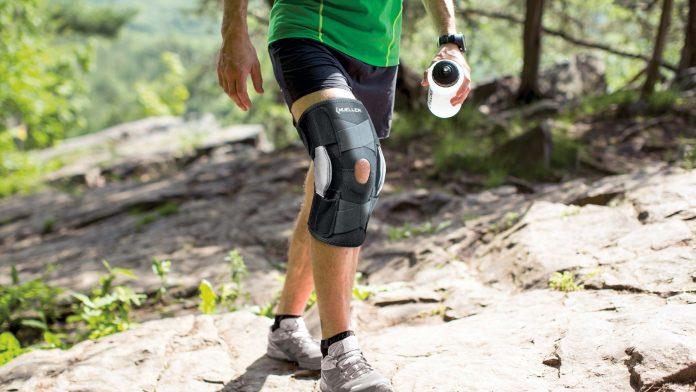Knee braces are valuable orthopedic devices designed to provide support, stability, and pain relief for individuals with knee injuries or conditions. Whether you’re an athlete recovering from a sports injury or someone dealing with knee osteoarthritis, choosing the right knee brace is essential for effective rehabilitation and improved mobility.
With a wide variety of knee braces available on the market, it can be challenging to determine which one is best suited for your specific needs. In this article, we will guide you through the process of choosing the right knee brace.
- Understand Your Condition: Before selecting a knee brace, it’s crucial to have a clear understanding of your knee condition. Identify the specific issue you are dealing with, such as ligament instability, osteoarthritis, patellar tracking disorder, or post-surgical recovery. Consult with a healthcare professional or orthopedic specialist who can accurately diagnose your condition and provide recommendations.
- Consult with a Healthcare Professional: A healthcare professional, such as a physical therapist or orthopedic specialist, can play a vital role in helping you choose the right knee brace. They have the expertise to assess your condition, evaluate your range of motion, and determine the level of support and stability required. Seek their guidance to ensure you select the most appropriate knee brace for your needs.
- Determine the Type of Knee Brace: There are several types of knee braces available, each designed to address specific knee conditions. The most common types include:
a) Prophylactic Braces: Prophylactic braces are preventive knee braces used primarily in contact sports to reduce the risk of knee injuries. They provide mild support and stability to protect the knee joint from external forces.
b) Functional Braces: Functional braces are commonly used for individuals with ligament injuries, such as ACL (anterior cruciate ligament) tears or MCL (medial collateral ligament) sprains. These braces offer moderate support and stability to the knee while allowing a certain degree of movement.
c) Rehabilitative Braces: Rehabilitative braces are typically used post-surgery or during the rehabilitation process. They provide maximum support, limit movement, and aid in healing by protecting the knee joint during the recovery phase.
d) Unloader Braces: Unloader braces are specifically designed for individuals with knee osteoarthritis. They help reduce pain and redistribute pressure on the affected side of the knee, providing relief and improving function.
4. Consider the Level of Support: The level of support required depends on the severity of your knee condition and the level of activity you engage in. Some individuals may require a high level of support and stability, while others may only need mild support. Consider the following support levels when choosing a knee brace:
a) Mild Support: Mild support braces are typically lightweight and provide basic compression and stabilization. They are suitable for minor knee pain, mild instability, or for individuals engaging in low-impact activities.
b) Moderate Support: Moderate support braces offer enhanced stability and compression. They are ideal for ligament sprains, mild to moderate knee instability, and individuals participating in moderate physical activities.
c) Maximum Support: Maximum support braces provide a high level of stability and restrict knee movement. They are recommended for severe ligament injuries, post-surgical recovery, or individuals with significant knee instability.
5. Size and Fit: Choosing the correct size and achieving a proper fit are crucial factors when selecting a knee brace. An ill-fitting brace may not provide the desired support or may cause discomfort and skin irritation. Most knee braces come in various sizes, so carefully measure the circumference of your knee and consult the manufacturer’s sizing chart to determine the appropriate size.
Ensure the brace fits snugly around your knee without being too tight or restrictive. It should provide adequate compression and support without impeding your range of motion or causing discomfort.
6. Quality and Durability: Investing in a high-quality knee brace is essential for durability and long-term effectiveness. Look for braces made from durable materials that can withstand frequent use and provide consistent support. Check for features such as reinforced stitching, adjustable straps, and breathable fabrics for enhanced comfort and longevity.
7. Comfort and Convenience: Comfort is a critical aspect to consider when choosing a knee brace. Look for braces with soft padding or cushioning to minimize discomfort and prevent skin irritation. Additionally, consider the convenience of the brace. Some braces feature open patella designs for improved kneecap alignment, while others offer adjustable straps for a customizable fit. Select a brace that aligns with your comfort preferences and convenience requirements.
8. Reviews and Recommendations: Before making a final decision, read customer reviews and seek recommendations from individuals who have used the knee brace you are considering. Real-life experiences can provide valuable insights into the brace’s performance, comfort, and durability.
9. Cost Considerations: While cost should not be the sole determining factor, it is essential to consider your budget when choosing a knee brace. Higher-priced braces may offer additional features or superior quality, but there are also affordable options available that can still meet your needs effectively. Strike a balance between quality, features, and cost to find the best knee brace within your budget.
Remember that selecting the right knee brace is a personalized decision based on your specific knee condition, level of activity, and comfort requirements. By considering these factors, seeking professional guidance, and taking the time to evaluate different options, you can choose a knee brace that provides optimal support, stability, and pain relief, helping you regain mobility and improve your overall quality of life.
Also Read: What Knee Brace Is Right For You?
